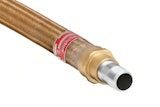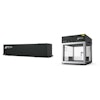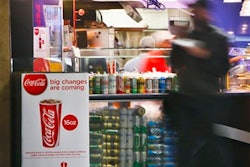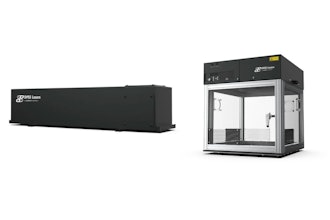Selection of a condition monitoring (CM) technology is not an easy task and requires that many concerns be taken into consideration. Determination of what functionality is needed, selection of a technology provider that can deliver the required technology, and an available budget are all critical considerations to think about before making a purchase. Otherwise, the intended results will not be found and the new CM technology will not provide value to the reliability efforts within your facility or corporation.
Management often fails to correctly consider how to successfully implement the CM technology once the selection has been made. The failure to consider beforehand how the CM technology should be implemented within their facility or corporation leads to:
- Increased labor
- Increased expense
- Unsatisfactory results from the CM technology, including:
- Missed technology findings
- Lack of integration into the existing business process
- Inability to create standards
- Inability to generate meaningful reports
- Living with the unsatisfactory results for a very long time
Step #1: Getting Started
An implementation plan should be created. The plan should include a timeline of when the implementation will start, realistic expectations of what the program will deliver, and an achievable “up and running” date.
Get advice from other resources that can help ensure you are properly prepared for the implementation of the new CM technology. Advice is available from many sources that you most likely have readily available. For instance, contractors that may be employed within your facility can be a great source of information. Most contractors are more than willing to share their experiences. Your CM vendor or contractor’s responsibility is to setup, utilize, analyze, and report the results obtained from CM technologies. It is the responsibility of your facility to implement the repair recommendations and any other suggestions made by your trusted contractor. You may have other facilities within your corporate organization that have implemented the CM technology already. This can be a great source of “Dos” and “Don’ts” based upon direct experiences within your organization. Seeking guidance from the technology provider can provide a wealth of advice, including valuable information that will help you successfully implement your new CM technology.
It is critical to budget money for training the employees that will apply the new CM technology in your facility. Not budgeting these funds at all, or not budgeting enough is one of the most common mistakes made by management, and one of the primary reasons the CM technologies fail to deliver the expected results within a facility. Funding is set aside for the hardware and software, but no money is set aside for training the employees to use the new technology. Employees cannot properly use what they do not understand! It is critical to make training available to employees that are unfamiliar with the new CM technology. However, it is just as critical to make training available to seasoned employees that may have used the technology in the past. Reasonable expectations can only be based on realistic preparation. Well trained and prepared employees create optimized and desired results.
Discuss your intentions with your IT department. IT is integrated within almost every aspect of facility and business operations, and CM technologies are no exception! Your IT department may have valuable suggestions that can contribute to the overall success of the CM technology or may have concerns that must be addressed before the implementation can be successful. Do not wait until after you purchase the CM technology to involve your IT department. Involving IT at the beginning of the process will make them a supporter rather than a road block later.
Step #2: Do you already have a technology database available?
If you are upgrading a current CM technology, then you may already have a database available. What do you do with the wealth of information that you have gathered after perhaps years of data collection, analysis? This is a critical question and one of the primary reasons facilities and corporations decide not to upgrade their current CM technology. They are afraid they will lose all of this information and the resulting investment. The reality may be different, for several reasons. Rarely does importing existing database information into a database from the same technology provide any real value for several reasons. In fact, it can actually create unnecessary expense. You can maintain the value of your current database and avoid unneeded expenses if you take several things into consideration.
It is usually not possible to import the actual data from one provider’s database into another (FFT, Time Waveform, oil data, etc). Most providers, if it is even possible, will charge a fee for this service. The reality is that your existing data usually does not look the same in the new provider’s software. This does not mean that you will lose the value of your historical data. – you can simply keep the original database and view the historical data in the original software for a period of time until enough new data is acquired to create relevant trends.
Some companies may wish to import database setups (analytical setups, templates, etc) into the software supplied by the new provider. Be careful of “Garbage in equals garbage out.” Ask one important question: If you created your database today would you use the same setups, templates, methods, etc. to build the new database? If the answer is yes, then some value may be obtained from importing or copying your current technology database. If the answer is no, then you will most likely use failed criteria to create your new database. This will result in limited success and increased expense for the next several years. Building a new technology database may allow you to take advantage of what newer technology and years of experience has to offer. The result could be better quality data, faster data collection, better analytical methods, greater reporting accuracy, etc.
Step #3: Determine what equipment will be monitored
Unless your facility has limitless trained resources, it is usually not possible to monitor every machine with CM. The question then becomes which machines should be monitored by CM technologies. Usually, the first step is to obtain an equipment criticality ranking. An equipment criticality ranking can become your guide to determine what equipment should be monitored by CM.
The second step is to determine what type of CM can be applied to your assets. A CM equipment and technology matrix will show you what CM technologies (vibration, ultrasonics, motor diagnostics, oil analysis, thermography, etc.) will provide benefits to your critical equipment.
It is important to determine standard equipment categories and assign them to your machinery. This will allow you to create monitoring standards based upon equipment type and save a lot of labor when building the required databases for your CM technologies. Furthermore, this will allow you to track problems by equipment type as well. These categories will become a critical tool to help focus your resources to increase reliability of your machines.
The third step is to determine how much equipment can be monitored by the available manpower in your facility. This is where you have to take some important decisions into consideration to ensure that the most critical equipment possible is monitored by each CM technology. In some cases it may be possible to have operators collect certain CM data for analysis by your trained analyst. This could allow you to greatly increase equipment coverage by a specific CM technology. In some cases a highly trained employee may be required to both collect and analyze data from a particular machine with specific CM technology.
Step #4: Obtain required equipment information
Once you have identified the equipment that will be monitored by CM it is important to obtain as much information on this equipment as possible. Specific information such as rotating speed, bearing information, gear information, etc. is critical to creating a database that will maximize the value of your CM technologies. This information can be used to identify specific fault frequencies in the monitored equipment and can greatly increase the accuracy of your analysis efforts. This information may be available from a variety of sources in your facility, such as the Computerized Maintenance Management System (CMMS), plant library, or various other resources.
It is important to walk down the machinery in your plant and gather information on the equipment that will be monitored. Take notes of any valuable nameplate information, equipment location, safety concerns, etc. This information will prove very valuable to the analyst and could provide your facility with documented equipment information that was previously unknown.
Take pictures of the equipment during the walk-down process. A picture really is worth a thousand words and can be used in many ways. For example, pictures can be incorporated into reports to enhance the appearance or show the actual monitoring locations on the equipment.
Step #5: Create equipment templates
Equipment templates are a great tool to reduce the amount of labor required to build a CM database and increase the analytical capabilities of the technology being used. Equipment templates are based upon the standard equipment categories previously determined in step #3. These templates should contain the measurement locations required to obtain data, analytical setups, alarm settings, etc.
Equipment templates allow you to create and easily maintain standards relating to how the CM technology collects, analyzes, and reports findings on your equipment. Furthermore, these templates will allow you to utilize a copy and paste method when actually creating your CM database. This reduces time, effort, and money spent as a result. Standards can be easily managed in the future by simply changing a template assigned to a specific type of equipment and having the changes automatically applied to all appropriate equipment in your CM database.
Trent Phillips is the Condition Monitoring Manager of LUDECA Inc., a provider of shaft alignment, vibration analysis, and balancing equipment. He has worked for many years creating and managing reliability programs and in the development of condition monitoring technologies. Trent has several certifications in condition monitoring technologies. He can be reached at 305-591-8935 or [email protected].























